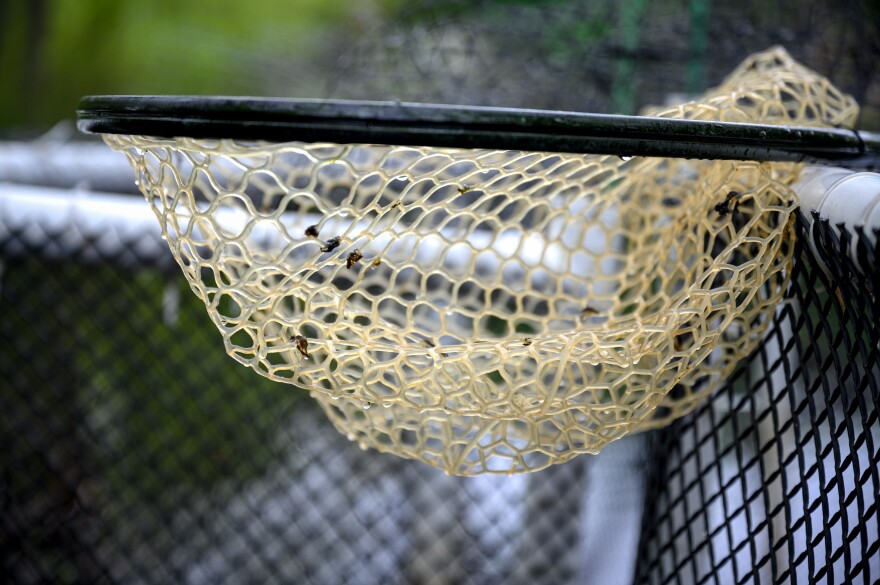As spring winds down, so concludes the migration of two species of fish that travel from the ocean to spawn in freshwater.
While once abundant in rivers and streams, alewives and blueback herring have seen their migration routes fractured by dams over centuries of development. Conservationists are working to remove some of these barriers to help the fish find ideal spawning habitat.
On a recent morning in May, I met up with Jon Vander Werff, a fish biologist with Save the Sound, to watch him wade into a river and try to spot these migrating fish, which he said are small but hugely important.
“All of these animals depend on these river herring – these alewife and blueback herring – as a food source,” Vander Werff said. “If they’re deleted from the ecosystem, the entire food chain can collapse.”
He said everything from tuna and seals to ospreys and great blue heron depend on these fish, which return to freshwater from the ocean to spawn. Kind of like a salmon does, but “they’re a little bit cooler than a salmon because they have a salmon-like migration,” Vander Werff said. “Adult life in the ocean, but then they spawn inland. But they can do it multiple times. A salmon only does it once!”
But for years, a nearby dam stopped these fish from going upstream. In 2015, it was removed to mitigate local flooding concerns after Hurricane Sandy and also to help these fish return.
During our visit, Vander Werff checked his trap to see just how many are coming back.
“I was here a little earlier and there are fish there, so we'll see what’s in there,” he said.

Stepping into the water, he waded around the fish cage made out of rebar and fencing. It’s all MacGyvered together with ties and carefully placed in the river.
“It’s deep enough to protect the fish from predation. So we don’t want birds to get in there, we don’t want a snake to get in,” he explained. “We need a spot a little bit deep enough for them to be protected. We want slow flow. So we’re not asking them to stay on a treadmill for an extended amount of time.”
Vander Werff said he comes out six days a week and checks the traps. Any fish caught are recorded and released immediately upstream. But he said the “no fish” days can be slow.
“Because you’re just staring at it. Is that a fish? Nope. That was algae. Is that a fish? Nope, that’s a shadow. Oops! That one’s a rock,” he said, laughing.
As he worked his net through the water, he said he thought he saw a sunfish in there – one of those small fish that kids catch.
He dipped the net in and poked around. “I thought there was a fish in here,” he said, before deciding “it got stage fright.” He pulled up his net, and worked his way back to the riverbank.
Afterward, he said the sunfish must have escaped through the front of the trap.
So overall, the news wasn’t great – no fish. But that wasn’t terribly surprising, because up to our visit, Vander Werff said, he’d seen no alewife or blueback herring all year at this spot.

It’s a bit of a mystery. Because last year, Vander Werff said he counted around 200 alewives here, which raises some interesting questions: “Where’d they go? What's going on? What happened to them?” he asked.
He said ocean conditions, fishing and the year-to-year volatility of these runs could all be a factor. But bottom line, scientists don’t really know what’s going on, at least not yet.
“The only way to answer these questions is keep researching – the more research, the more people care about this – is how these questions get answered,” Vander Werff said.
Shortly after the visit, I messaged Vander Werff to ask if the Woodbridge spot turned up any fish. “I was honestly shocked,” he replied, saying he’d spotted three alewives just days later.
It was a surprising late-season revelation. A sign that scientists still have a lot to learn about the mysterious migrations of these small but important fish.



